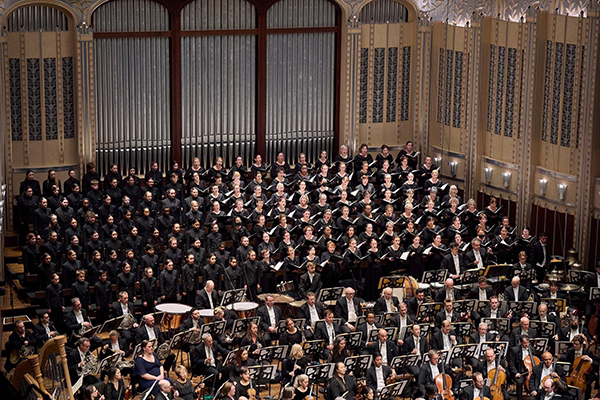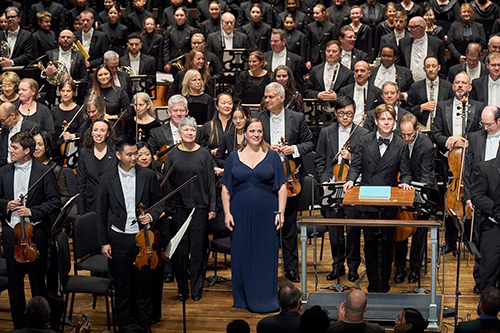by Daniel Hathaway

CLEVELAND, Ohio — On Thursday evening at Severance Music Center, The Cleveland Orchestra launched a trio of performances of Gustav Mahler’s Symphony No. 3 with Finnish conductor Klaus Mäkëla at the helm and the assistance of mezzo-soprano Jennifer Johnson, the upper voices of the Cleveland Orchestra chorus, and the Cleveland Orchestra Children’s Chorus.
Mahler 3 is a famously long piece — its first movement alone lasts as long as the following five. Paying close attention to the composer’s explicit instructions, and never letting things get too big too soon, Mäkëla expertly paced the work, creating an arch that gathered the 110-minute performance into a glorious whole rather than treating it as a continuous series of unrelated climaxes.
This was a remarkable feat of concentration on the part of conductor and musicians. Mahler told Jean Sibelius when the two met in 1907, “The symphony must be like the world. It must embrace everything.” In Mahler’s case, that often meant that the loftiest musical material could be bundled with tunes the composer heard on the streets of Vienna, and reconciling everything can pose a challenge for interpreters.
Happily, Mäkëla and the Orchestra established a noble tone right from the opening eight-horn fanfare, and regarded every stylistic change that followed seriously.
Inspired solos graced the first movement, and portentous cellos and basses introduced a typically Mahlerian march. A snare drum heralded the return of the opening horn calls, and bass drum added a sinister note before the movement culminated in a grand ending.
After a pause while the soloist and chorus filed onstage, the symphony resumed with a cheerful country dance played by oboist Frank Rosenwein over pizzicato cellos. The textures thickened with the addition of more instruments, but lines remained clean and transparent through to the calm conclusion.
In the third movement, Mahler introduced the sound of the posthorn — played offstage by Michael Sachs like a call from a distant mountain — but in its melodic sophistication unlike anything that would normally announce the arrival of mail in the Austrian countryside.
Filling but not overpowering the hall, Jennifer Johnson made a sonorous appearance in Mahler’s setting of Friedrich Nietzsche’s “Midnight Song”” from Also sprach Zarathustra, accompanied by slides from oboe and English horn and a golden obligato from solo horn.
Time had stopped in its tracks, but Mäkëla brought it back, segueing into the delightful Bimm, Bamm, Bimm, Bamms of children’s voices in the bell chorus from Des Knaben Wunderhorn, joined by sopranos and altos sounding as sweet as their lyrics. Johnson’s luminous voice once again rang into the hall, and all too soon, the concluding piccolo notes faded magically into the final movement.
Mahler wrote, “Slow; peaceful; deeply felt,” at the beginning of the sixth movement, and Mäkëla and the Orchestra luxuriated in its musical lines, taking their time to let its gorgeousness unfold. The textures built in intensity only to retreat several times in Mahler’s characteristic way of testing the waters to see if his optimism is really warranted. A wonderful flute solo by Joshua Smith helped affirm that it was, and after the last swell, the movement and the symphony ended quietly. Mäkëla held the silence well after the notes in the score had disappeared — a moment to remember.
Photos by Roger Mastroianni courtesy of The Cleveland Orchestra
Published on ClevelandClassical.com October 24, 2024
Click here for a printable copy of this article





